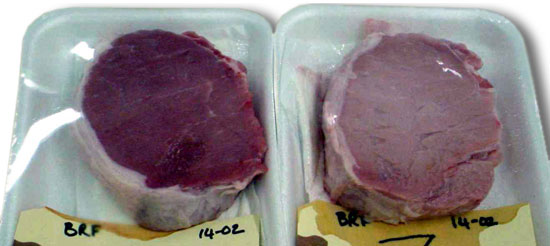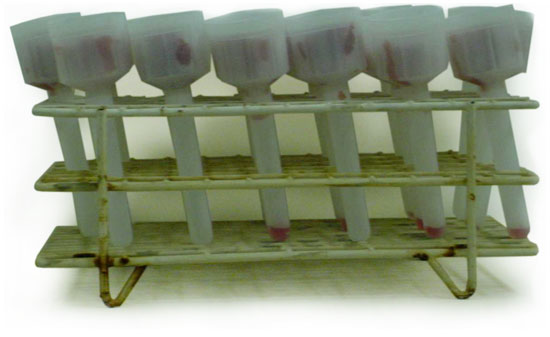Introduction
Magnesium (Mg) is a macro-mineral and the concentration in the adult body is approximately 0.05%. Approximately 65% of Mg is located in bone, along with calcium and phosphorus, where it contributes to bone strength and integrity. The remaining 35% is distributed in soft tissue and extracellular fluid. Information about Mg is much more readily available for ruminants because of the occurrence of grass tetany associated with Mg deficiency. However, much less research has focused on Mg metabolism in nonruminants.
Magnesium is present in relatively high concentrations (0.12 to 0.15%) in cereal grains and plant protein sources typically contain twice that amount. The requirement for Mg for swine has not been clearly defined, but has been suggested to be approximately 0.04%. Thus, common diets fed to pigs should contain adequate amounts of Mg and deficiencies of Mg are rare. Deficiency signs include hyperirritability, muscle twitching, reluctance to stand, loss of equilibrium, tetany, and eventually death. Information on Mg toxicity is very limited; however, the estimated tolerable concentration has been suggested to be 0.3%.
Absorption, Regulation, and Functions
Magnesium is absorbed in the small intestine and efficiency of absorption is influenced by Mg status of the pig, Mg content of the diet, and the presence of other dietary factors including, calcium, phosphorus, fatty acids, and phytate, which can impair Mg absorption. Magnesium in common feed ingredients is estimated to be approximately 20 to 30% digestible in the pig. The kidney is the major site of Mg regulation and is able to excrete Mg at high dietary concentrations and reabsorb Mg with greater efficiency at low dietary concentrations.
Magnesium is a structural component of bone and teeth, it is required for normal nerve and muscle function, and it is involved in more than 300 enzyme systems. Thus, Mg is closely involved in the metabolism of carbohydrates and lipids, protein synthesis, and energy metabolism.
Although the requirement for Mg can be met by common feed ingredients in the diet of the pig, research has shown benefits from supplementing Mg above the estimated requirements, as discussed below.
Magnesium and Stress
Dietary Mg supplementation at concentrations of approximately 1 g/kg of feed (or approximately 3 g/d) has been shown to reduce signs of stress. Undoubtedly, the degree of stress an animal experiences is difficult to determine; however, plasma cortisol, epinephrine, and norepinephrine have been used to objectively determine differences in stress response. Significant reductions in catecholamine and corticosterone concentrations in serum of stressed rats have been reported when they were provided supplemental Mg gluconate. Similarly, dietary Mg aspartate reduced the stress response of pigs measured by cortisol and catecholamine concentrations of plasma. This has also been shown in pigs at slaughter, where pigs provided with Mg for 5 days prior to slaughter had reduced plasma epinephrine. Others have shown that pigs receiving Mg were visually calmer during lairage following arrival at the slaughter facility. It appears that Mg can improve the ability of pigs to deal with stress, which may have important practical applications. For example, Mg supplementation may prove to be useful when mixing pigs, to avoid cannibalism, and to reduce the incidence of pale, soft, and exudative meat. Comprehensive studies are needed, however, to determine whether Mg supplementation during times of stress can improve pig growth performance and have economic benefits.

Not PSE and PSE meat
Magnesium and Pork Quality
Dietary Mg supplementation has been observed to improve pork quality, specifically color and fluid loss. Early work from Australia demonstrated improvements in color and waterholding capacity regardless of amount (1.6 or 3.2 g/d), source (aspartate, sulfate, or chloride), or duration (2 or 5 d prior to harvest) of Mg supplementation. Subsequent studies have been less consistent. Our studies evaluated the impact of Mg supplementation via water (300 to 900 mg/L) on pork quality. Generally, Mg supplementation did not improve pork quality, and we observed no effects due to level or duration of supplementation, genotype of pig used, or growth rates of pigs. We have also evaluated Mg supplementation via water in a commercial swine facility and found no effects on pork quality when pigs were slaughtered at a packing plant that used electrical stunning technology or a plant that used CO2 stunning.

Drip loss
Magnesium for Sows
Lactating sow productivity may be negatively affected due to a lack of appetite, sickness, low milk production and constipation or a combination of these factors. Magnesium sulfate has been successfully used as a laxative to prevent constipation. Lactation feed can be top-dressed with approximately 30 grams of magnesium sulfate (or potassium chloride is effective as well) for sows that have problems. Alternatively, if constipation is a general problem in the farrowing barn, magnesium sulfate (or potassium chloride) can be included in the lactation diet at 0.75-1.0%.



